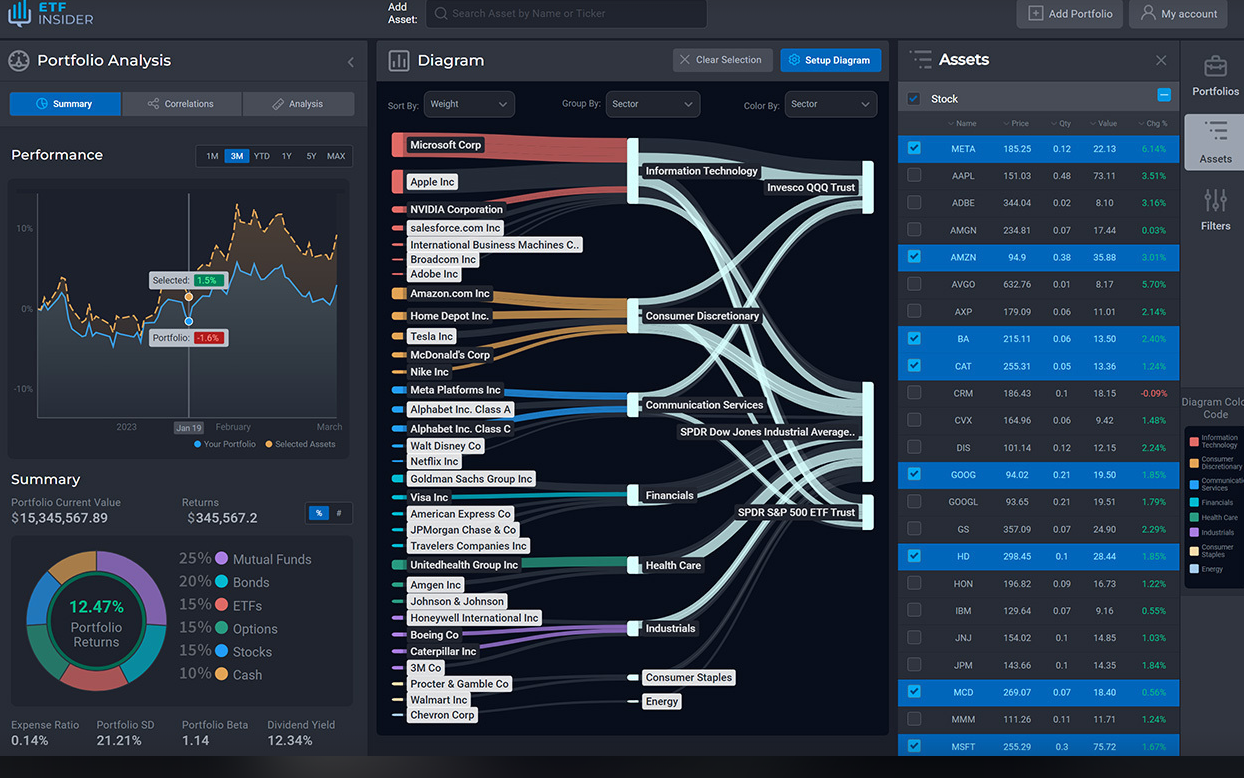
What is the FLRT ETF ?
In the world of finance, Exchange-Traded Funds (ETFs) have become increasingly popular among investors seeking diversified exposure to various asset classes. The FLRT ETF, managed by Pacific Asset Management LLC, is one such financial instrument that focuses on income-producing adjustable rate securities. In this article, we will delve into the FLRT ETF, providing a thorough analysis of its underlying assets, benefits for investors, and important considerations before investing.
FLRT ETF Overview
The FLRT ETF, formally known as the Focused Loan/Trade ETF, is designed to achieve its investment objective by primarily investing in income-producing adjustable rate securities. Under normal circumstances, at least 80% of its net assets are allocated to senior secured floating rate loans and other adjustable rate securities. These securities are often considered below investment grade or high yield, offering the potential for higher yields to compensate for the associated risks.
FLRT ETF Underlying and Exposure: What does it Track and How?
The FLRT ETF's underlying assets consist of a focused portfolio of income-producing adjustable rate securities, including collateralized loan obligations (CLOs), asset-backed securities (ABS), and commercial mortgage-backed securities (CMBS). These adjustable rate securities, also known as floating rate securities, have interest rates that change periodically based on a recognized index interest rate or another method of determining prevailing interest rates. This characteristic allows investors to potentially benefit from rising interest rates and offers a degree of protection against interest rate risk.
 FLRT overlap What is the FLRT ETF ?
FLRT overlap What is the FLRT ETF ?
FLRT ETF Benefits to Invest in this ETF
There are several compelling reasons why investors may consider the FLRT ETF for their portfolios. Firstly, its focus on income-producing adjustable rate securities can provide a steady stream of income even in uncertain market conditions. Additionally, the ETF's active management approach allows the portfolio managers to capitalize on market opportunities and adjust the holdings according to changing economic conditions. The potential for higher yields in a low-interest-rate environment can also be an attractive feature for income-seeking investors.
FLRT ETF Considerations Before Investing
While the FLRT ETF offers various benefits, potential investors must also be aware of certain considerations. As with any investment, there are inherent risks associated with income-producing adjustable rate securities, especially those rated below investment grade. The high yield nature of these securities means they are subject to greater credit risk and market volatility. Additionally, the secondary market for high yield securities can be less liquid, which may impact the ease of buying or selling shares of the ETF at favorable prices.
Conclusion:
In conclusion, the FLRT ETF provides investors with exposure to a focused portfolio of income-producing adjustable rate securities. Its potential for higher yields and active management approach make it an attractive option for those seeking income in today's market environment. However, investors should carefully consider the associated risks and perform due diligence before making any investment decisions.
Disclaimer: The information provided in this article is for educational purposes only and should not be construed as investment advice. The content is based on publicly available sources as of [Current Date], and we do not provide any investment advisory services. Investors should consult with a qualified financial advisor before making any investment decisions.
Sources:
FLRT ETF issuer
FLRT ETF official page
FLRT quote and analysis
Discover the top holdings, correlations, and overlaps of ETFs using our visualization tool.
Our app allows you to build and track your portfolio.
To learn more about the FLRT Pacer Pacific Asset Floating Rate High Income ETF, access our dedicated page now.
FAQ
What is the FLRT ETF?
The FLRT ETF, also known as the iShares Floating Rate Bond ETF, is an exchange-traded fund that provides investors with exposure to a portfolio of floating-rate bonds.
What is the underlying index that the FLRT ETF aims to track?
The FLRT ETF aims to track the performance of the Bloomberg U.S. Aggregate Float Adjusted Index, which measures the performance of a wide spectrum of investment-grade, taxable, fixed income securities in the United States, including government, corporate, and international dollar-denominated bonds, with maturities of more than 1 year.
What are floating-rate bonds included in the FLRT ETF?
Floating-rate bonds are debt securities whose interest rates adjust periodically based on changes in specified interest rate benchmarks, such as the London Interbank Offered Rate (LIBOR). These bonds are designed to provide investors with protection against rising interest rates.
How does the FLRT ETF work?
The FLRT ETF operates by using a sampling approach to hold a diversified collection of floating-rate bonds that approximates the full Bloomberg U.S. Aggregate Float Adjusted Index in terms of key risk factors and other characteristics. At least 80% of the Fund's assets will be invested in bonds held in the Index.
What are the advantages of investing in the FLRT ETF?
Investing in the FLRT ETF offers exposure to a diversified portfolio of floating-rate bonds, which can provide a potential hedge against rising interest rates. Additionally, it offers the benefits of an ETF, such as liquidity, transparency, and lower expense ratios compared to actively managed funds.